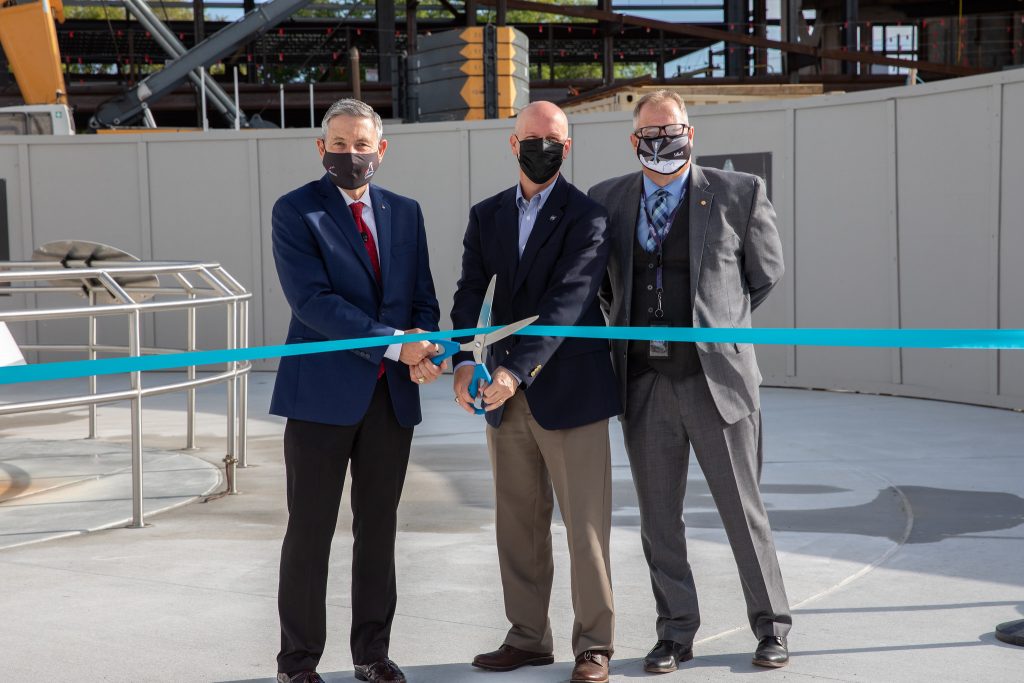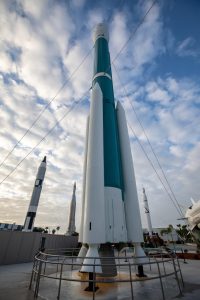
The last United Launch Alliance (ULA) Delta II rocket became a permanent resident of the Rocket Garden at the Kennedy Space Center Visitor Complex in Florida on March 23, 2021. Representatives from the Visitor Complex, ULA, Kennedy Space Center, NASA’s Launch Services Program, and the 45th Space Wing gathered for a ribbon cutting to commemorate the addition of the rocket to the line-up.

“It’s great having this ULA Delta II take its place among the other historic vehicles in our Rocket Garden,” said Kennedy Space Center Director Bob Cabana. “The Delta II launched so many critical NASA science missions throughout our solar system as well as to planet Earth, and now it begins its second career on a mission of inspiration for all our future rocket scientists and engineers visiting the Kennedy Space Center.”
Delta II took its place among iconic giants, joining an original Delta, Mercury-Redstone, Mercury-Atlas, Gemini-Titan, the Junos, Atlas-Agena and Saturn 1B.
Following the Delta II’s final mission in 2018, ULA selected Kennedy’s Visitor Complex to receive a remaining vehicle for an outdoor display to inspire current and future generations to learn about the rocket’s history.
“Today is a historic day for our ULA team. We are excited to honor the legacy of this rocket that was so instrumental in delivering critical missions for NASA, the Department of Defense and commercial customers,” said Ron Fortson, director and general manager of United Launch Alliance, “Today we honor not only the Delta II’s historical impact, but also the men and women who designed, built, and launched it for nearly three decades.”
For nearly 30 years, the Delta II was the industry workhorse for NASA and civilian scientists, the U.S. military, and commercial clients. The Delta II launched more than 230 satellites on 155 flights to deploy the Global Positioning System (GPS), explore the solar system, and serve the medium-class commercial space launch market. Delta II soared into space from both coasts of the United States, launching from two side-by-side pads at Cape Canaveral’s Space Launch Complex (SLC)-17 in Florida, and the SLC-2 at Vandenberg Air Force Base in California. NASA’s Launch Services Program launched the ICESat-2 spacecraft on the final Delta II launch on Sept. 15, 2018, from Vandenberg.
“I was excited to see Delta II in the Rocket Garden against a beautiful blue sky. I am so thankful for the ULA/Delaware North collaboration that made this display possible,” said Tim Dunn, Launch Services Program launch director. “When I think of Delta II, I think of the launch team, the engineers, analysts, and technicians who contributed to this rocket’s unprecedented record of success, consistent performance, and its appropriate nickname, ‘The Workhorse.’ I believe the success of this rocket has left a huge ripple effect on the launch systems we have today.”
McDonnell Douglas created the rocket in the late 1980s to fulfill the U.S. Air Force’s need for a launch vehicle to carry the GPS first generation of operational satellites into space and create a worldwide precision navigation network.
